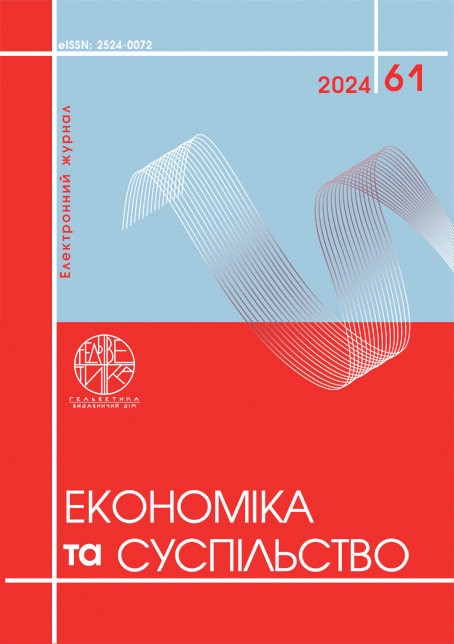AUTOMATION AND TECHNOLOGY OF HR PROCESSES IN ENTERPRISES AS A DRIVER OF MODERN DEVELOPMENT
Abstract
The article proposes a methodology for determining the degree of automation and digital technology of the company's HR processes based on the construction of a matrix, the quadrants of which are divided depending on the degree of digital technology of HR into the following levels: primary technology of HR; fragmented HR technology; mature HR technology; intelligent HR. The parameters for determining the criteria for calculating the level of automation and the coefficient of digital technology of HR processes at the enterprise are characterized according to the following processes: personnel planning and forecasting; personnel selection; personnel evaluation; personnel productivity management; analysis of works; competence management; registration of labor relations; personnel adaptation; personnel administration; employee training management; career management; maintenance of workplaces; labor regulation and labor intensity management; working time management; operational management of units and employees; personnel safety; motivational management; HR analytics; personnel cost management. Using the matrix developed in the study, we will analyze the degree of automation and digital technology of HR processes at domestic enterprises under modern conditions. It was established that the most common situation among the 65 domestic enterprises studied is the situation in which the share of automated HR processes does not exceed 25%, while the company uses several personnel systems and HR technology is fragmented. It was also determined that the processes of training, selection and motivation of personnel are a priority for the introduction of the latest technologies, while the analysis of work, management of competencies and personnel safety for the studied sample of enterprises turned out to be not significant and these processes were not subject to technological modernization at all.
References
Василик, А. В., Данилицька, А. П. (2016). Трансформація управління людським капіталом під впливом інформаційно-комунікаційних технологій. Соціально-трудові відносини: теорія і практика : зб. наук. пр., 2, 203–210.
Волянська-Савчук, Л. В. (2019). Використання інноваційних персонал-технологій в управлінні персоналом на підприємствах. Економiка i органiзацiя управлiння, 1 (33), 33–42.
Грішнова, О. А., & Брінцева, О. Г. (2015). Фіктивний людський капітал: сутність, характерні особливості, чинники формування. Демографія та соціальна економіка, (1), 90–101.
Денисов, А. Ф., Кардаш, Д. С. (2018). Аналіз практики цифрових технологій в підборі персоналу. Економіка і управління, 6, 26–37.
Лібанова, Е.М. (2023). Як змінився ринок праці у воєнний час: сьогодення та перспективи. Дзеркало тижня. Отримано з https://zn.ua/ukr/ECONOMICS/jak-zminivsja-rinok-pratsi-u-vojennij-chas-sohodennja-ta-perspektivi.html (дата звернення: 30.03.2024)
Махмудов, Х. З., Чухліб, В. Є. (2023). Вплив цифрових технологій на ефективність управління персоналом. Проблеми і перспективи економіки та управління, 4 (32), 17–26.
Шульпіна, Н. В. (2017). Особливості впровадження сучасних технологій управління персоналом в Україні. Соціально-економічні проблеми сучасного періоду України, 1, 113–116.
Ajewole, F., Kelkar, А., Moore D., Thirtha, M. (2023). Unlocking the industrial potential of robotics and automation. McKinsey. Отримано з https://www.mckinsey.com/industries/industrials-and-electronics/our-insights/unlocking-the-industrial-potential-of-robotics-and-automation
Azmuk N., Grishnova O., Kuklin O. Digital employment: Ukraine’s ranking in the global division of digital labour. Financial and Credit Activity Problems of Theory and Practice, 2022, 2(43), 380–391.
Grishnova, O., Cherkasov, A. & Brintseva, O. (2019) Transition to a new economy: transformation trends in the field of income and salary functions. Problems and Perspectives in Management, 17 (2), pp. 18–31
Kharazishvili, Y., Grishnova, O., & Kamińska, B. (2019). Standards of living in Ukraine, Georgia, and Poland: identification and strategic planning. Virtual Economics, 2(2), 7-36.
Vasylyk, A. V., Danylytsʹka, A. P. (2016). Transformatsiya upravlinnya lyudsʹkym kapitalom pid vplyvom informatsiyno-komunikatsiynykh tekhnolohiy [Transformation of human capital management under the influence of information and communication technologies]. Sotsialʹno-trudovi vidnosyny: teoriya i praktyka : zb. nauk. pr., 2, 203–210. [in Ukrainian].
Volyansʹka-Savchuk, L. V. (2019). Vykorystannya innovatsiynykh personal-tekhnolohiy v upravlinni personalom na pidpryyemstvakh [Use of innovative personnel technologies in personnel management at enterprises]. Ekonomika i orhanizatsiya upravlinnya, 1 (33), 33-42. [in Ukrainian].
Grishnova O.A., Brintseva O.G. (2015). Fictitious human capital: essence, characteristic features, factors of formation // Demography and Social Economy. (1). P. 90-101. [in Ukrainian].
Denysov, A. F., Kardash, D. S. (2018). Analiz praktyky tsyfrovykh tekhnolohiy v pidbori personalu [Analysis of the practice of digital technologies in personnel selection]. Ekonomika i upravlinnya, 6, 26–37. [in Ukrainian].
Libanova, E.M. (2023). Yak zminyvsya rynok pratsi u voyennyy chas: sʹohodennya ta perspektyvy [How the labor market changed during the war: present and prospects]. Dzerkalo tyzhnya. Otrymano z https://zn.ua/ukr/ECONOMICS/jak-zminivsja-rinok-pratsi-u-vojennij-chas-sohodennja-ta-perspektivi.html [in Ukrainian]. (Accessed 30 March 2023)
Makhmudov, KH. Z., Chukhlib, V. YE. (2023). Vplyv tsyfrovykh tekhnolohiy na efektyvnistʹ upravlinnya personalom [The influence of digital technologies on the effectiveness of personnel management]. Problemy i perspektyvy ekonomiky ta upravlinnya, 4 (32), 17–26. [in Ukrainian].
Shulʹpina, N. V. (2017). Osoblyvosti vprovadzhennya suchasnykh tekhnolohiy upravlinnya personalom v Ukrayini [Peculiarities of the implementation of modern personnel management technologies in Ukraine]. Sotsialʹno-ekonomichni problemy suchasnoho periodu Ukrayiny, 1, 113-116. [in Ukrainian].
Ajewole, F., Kelkar, A., Moore D., Thirtha, M. (2023). Unlocking the industrial potential of robotics and automation. McKinsey. Otrymano z https://www.mckinsey.com/industries/industrials-and-electronics/our-insights/unlocking-the-industrial-potential-of-robotics-and-automation
Azmuk N., Grishnova O., Kuklin O. Digital employment: Ukraineʺs ranking in the global division of digital labour. Financial and Credit Activity Problems of Theory and Practice, 2022, 2(43), 380–391.
Grishnova, O., Cherkasov, A. & Brintseva, O. (2019) Transition to a new economy: transformation trends in the field of income and salary functions. Problems and Perspectives in Management, 17 (2), pp. 18–31
Kharazishvili, Y., Grishnova, O., & Kamińska, B. (2019). Standards of living in Ukraine, Georgia, and Poland: identification and strategic planning. Virtual Economics, 2(2), 7-36.

This work is licensed under a Creative Commons Attribution 4.0 International License.


